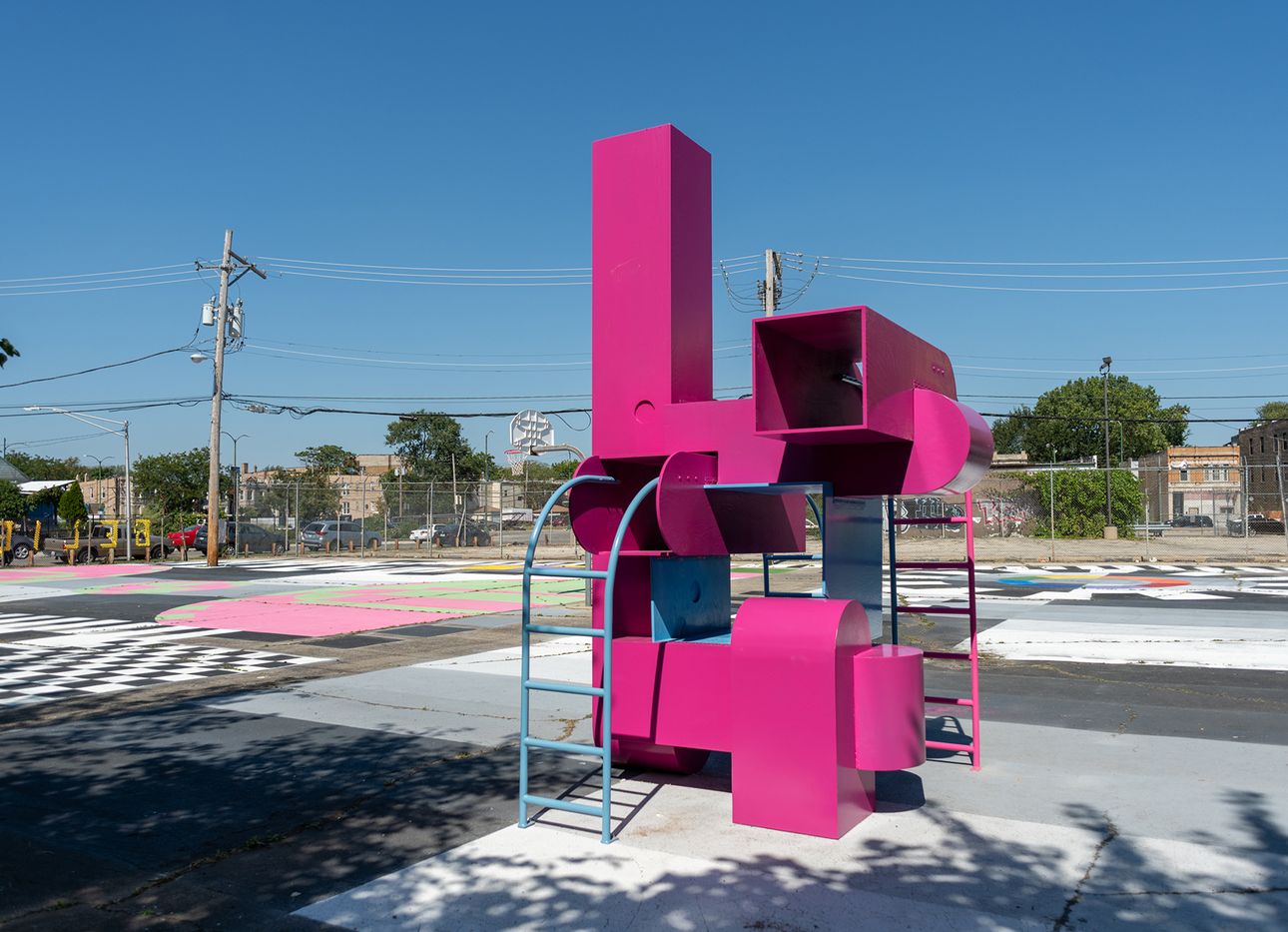
What to See at the 2021 Chicago Architecture Biennial
In Chicago, more than 10,000 city-owned lots currently sit vacant, concentrated within predominantly Black and brown communities. David Brown, a professor at the School of Architecture at the University of Illinois at Chicago, has been mapping these unoccupied spaces—and developing possible uses for them—for more than a decade, and presented his findings and ideas at the 2012 Venice Biennale, then at the inaugural edition of the Chicago Architecture Biennial in 2015. Now, as the latter biennial’s 2021 artistic director, Brown further expands upon his project, using it to inform the central theme of the fourth-annual event, titled “The Available City.” On view tomorrow through December 18, the biennial’s free, public programming will provide a view into what happens when designers team up with local groups to rethink how vacant space might be used to engage and empower urban residents.
Unlike previous editions of the biennial, which primarily took place in the Chicago Cultural Center, “The Available City” embeds itself within the city itself, anchored in eight South and West Side neighborhoods. (The Cultural Center is now serving as an orientation and information center.) There, site-specific architectural commissions, alongside performances, workshops, and other projects by more than 80 participants from 18 countries, will demonstrate potential uses for neglected space.
Among these uses, bringing people together is a recurring aim. An installation called “Block Party” in Bell Park by Miami-based Studio Barnes, in collaboration with University of Colorado Boulder architecture and urban design professor Shawhin Roudbari and the Chicago nonprofit MAS Context, riffs on the blow-up bounce houses often seen at street fairs. On 63rd Street, Basel– and Cape Town–based firm Matri-Archi(tecture) will debut “Reflecting Our (Global) South Side,” an outdoor gathering space that references radial community planning, an urban planning approach based on a series of concentric circles historically used in sub-Saharan Africa.
A particularly powerful installation in Washington Park offers a more permanent symbol of community: California-based Hood Design Studio (whose founder, Walter Hood, was the guest on Ep. 85 of our At a Distance podcast) planted a grid of 16 bald cypress trees that form the installation “new Witness Trees.” Drawing from the concept of witness trees—trees that were present during key events, and serve as sentinels of history—the plants mark the past year’s events, including the pandemic, the climate crisis, and political upheaval. Visitors are invited to write a recent memory onto a piece of foil and tie it to one of the branches, adding their observations to the work.
Other projects focus on food as a means of building thriving locales. Netherlands-based Studio Ossidiana’s “The Garden Table,” for example, a permanent installation in the El Paseo Community Garden, will function as a site for cooking, eating, and playing. At Englewood Village Plaza, Tokyo’s Atelier Bow-Wow will present “Englewood’s Commons,” which consists of container-based office and storage facilities and a 40-person communal table that’s open to all. Intended for dining or conversing, the table nods toward the relationship between a neighborhood’s wealth and its residents’ physical and emotional health. (A space for events, markets, and performances will be added next year.)
There’s also a bird conservation–themed mini-golf course organized by the Lincoln Park Zoo, and a robot-fabricated outdoor classroom and pavilion created by architecture firm Skidmore, Owings & Merrill with the University of Michigan’s Taubman College of Architecture and Urban Planning—just to name a couple of the programs created by the biennial’s many civic, cultural, and educational partners. Two core exhibitions, held at the Graham Foundation in the Gold Coast neighborhood and an unused storefront at the Bronzeville Artist Lofts, will feature work by a range of designers, including Departamento del Distrito, Enlace Arquitectura and Ciudad Laboratorio, RIFF Studio, and SHAU.
Those not in Chicago can take part in the biennial via its website, which will offer a range of resources such as a virtual conversation series, InDialogue, and essay-based projects, two of which will be posted every third Thursday of each month through the duration of the event.
Navigating the sprawling biennial may take more planning this year than it did in those prior, but its wide footprint is partly the point and reflective of the ambitions of Brown’s vision. “When the biennial opens, our work is really just beginning,” he said in a statement. “The biennial is an open conversation on possibility, and I am excited to see what ideas, collaborations, and partnerships emerge from this forum.”